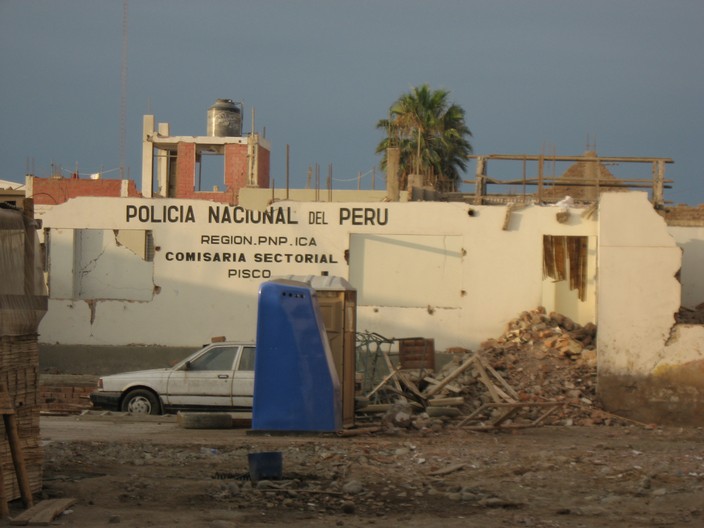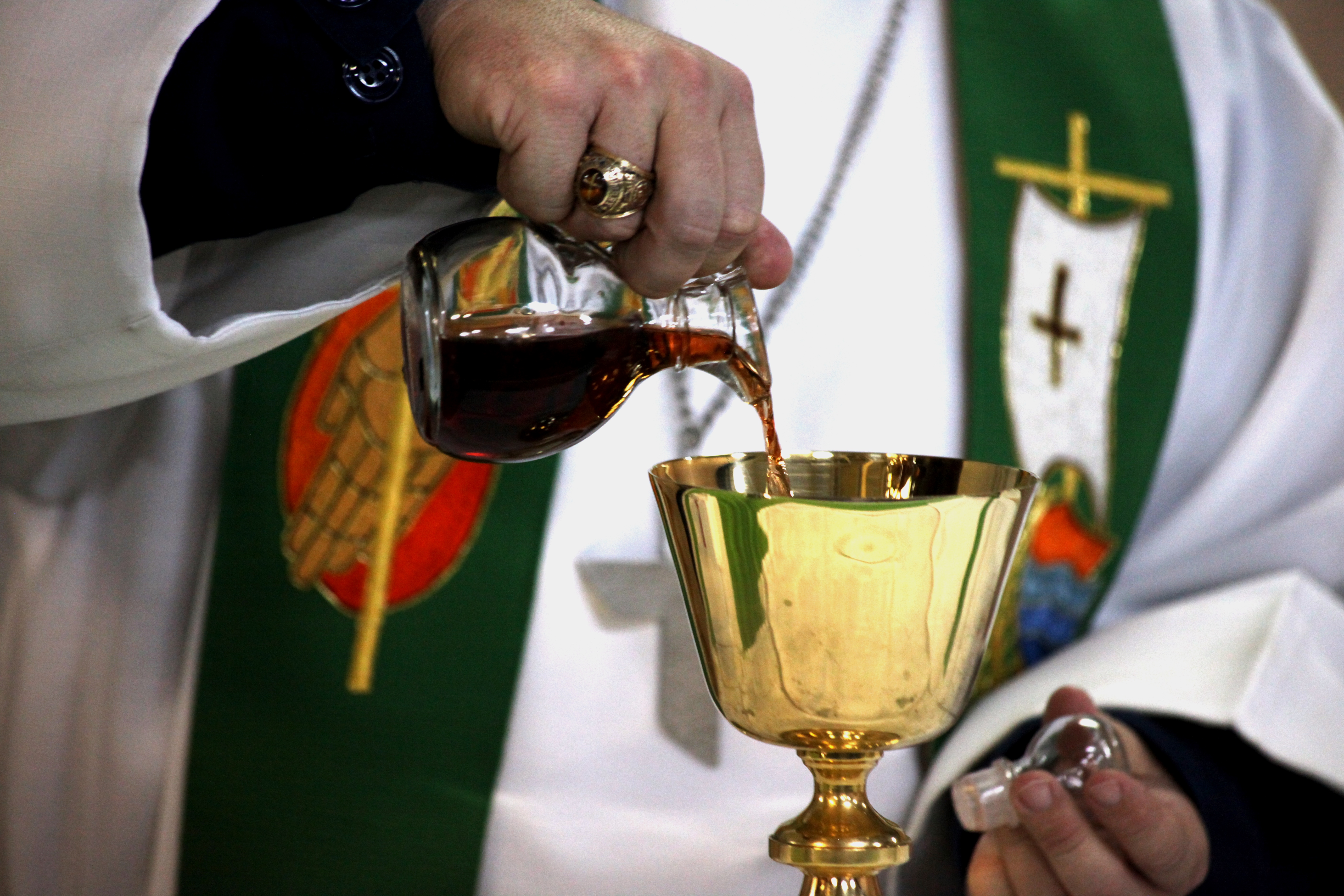|
Pisco
Pisco is a colorless or yellowish-to-amber colored brandy produced in winemaking regions of Peru and Chile. Made by distilling fermented grape juice into a high-proof spirit, it was developed by 16th-century Spanish settlers as an alternative to orujo, a pomace brandy that was being imported from Spain. It had the advantages of being produced from abundant domestically grown fruit and reducing the volume of alcoholic beverages transported to remote locations. Etymology The oldest use of the word ''pisco'' to denote Peruvian aguardiente dates from 1764. The beverage may have acquired its Quechua name from the Peruvian town of Pisco, once an important colonial port for the exportation of viticultural products,''Concise Oxford Dictionary'', 12th edition, 2012. which is located on the coast of Peru in the valley of Pisco, by the river with the same name."Pisco", ''Oxford English Dictionary''. second ed. 1989. From there, "Aguardiente de Pisco" was exported to Europe, especial ... [...More Info...] [...Related Items...] OR: [Wikipedia] [Google] [Baidu] |
Pisco, Peru
Pisco ( qu, Pisqu) is a city located in the Department of Ica of Peru, the capital of the Pisco Province. The city is around 9 metres (28 feet) above sea level. Pisco was founded in 1640, close to the indigenous emplacement of the same name. Pisco originally prospered because of its nearby vineyards and became noted for its grape brandy or pisco which was exported from its port. Pisco has an estimated population of 104,656 (est. 2015). History The city was highly populated until 1685, when it was pillaged by English pirates. The city suffered again in 1687 because of an earthquake. Vines are abundant, despite the sandy and infertile terrain; they grow in many places because of the moisture from inside the earth and provide Lima with its wines and grape concentrates that run along the various mountain provinces extending to Panama and Guayaquil. Pisco was attacked by the pirates Clerck and David; in addition, in 1687 it was destroyed by an earthquake, which caused a tsunami to ... [...More Info...] [...Related Items...] OR: [Wikipedia] [Google] [Baidu] |
Brandy
Brandy is a liquor produced by distilling wine. Brandy generally contains 35–60% alcohol by volume (70–120 US proof) and is typically consumed as an after-dinner digestif. Some brandies are aged in wooden casks. Others are coloured with caramel colouring to imitate the effect of aging, and some are produced using a combination of both aging and colouring. Varieties of wine brandy can be found across the winemaking world. Among the most renowned are Cognac and Armagnac from southwestern France. In a broader sense, the term ''brandy'' also denotes liquors obtained from the distillation of pomace (yielding pomace brandy), or mash or wine of any other fruit (fruit brandy). These products are also called '' eau de vie'' (which translates to "water of life"). History The origins of brandy are tied to the development of distillation. While the process was known in classical times, it was not used for significant beverage production until the 15th century. In the early 16th ... [...More Info...] [...Related Items...] OR: [Wikipedia] [Google] [Baidu] |
Peru
, image_flag = Flag of Peru.svg , image_coat = Escudo nacional del Perú.svg , other_symbol = Great Seal of the State , other_symbol_type = National seal , national_motto = "Firm and Happy for the Union" , national_anthem = "National Anthem of Peru" , march = "March of Flags" , image_map = PER orthographic.svg , map_caption = , image_map2 = , capital = Lima , coordinates = , largest_city = capital , official_languages = Spanish , languages_type = Co-official languages , languages = , ethnic_groups = , ethnic_groups_year = 2017 , demonym = Peruvian , government_type = Unitary semi-presidential republic , leader_title1 = President , leader_name1 = Dina Boluarte , leader_title2 = First Vice President , lead ... [...More Info...] [...Related Items...] OR: [Wikipedia] [Google] [Baidu] |
Viceroyalty Of Peru
The Viceroyalty of Peru ( es, Virreinato del Perú, links=no) was a Spanish imperial provincial administrative district, created in 1542, that originally contained modern-day Peru and most of the Spanish Empire in South America, governed from the capital of Lima. The Viceroyalty of Peru was officially called the Kingdom of Peru. Peru was one of the two Spanish Viceroyalties in the Americas from the sixteenth to the eighteenth centuries. The Spanish did not resist the Portuguese expansion of Brazil across the meridian established by the Treaty of Tordesillas. The treaty was rendered meaningless between 1580 and 1640 while Spain controlled Portugal. The creation during the 18th century of Viceroyalties of New Granada and Río de la Plata (at the expense of Peru's territory) reduced the importance of Lima and shifted the lucrative Andean trade to Buenos Aires, while the fall of the mining and textile production accelerated the progressive decay of the Viceroyalty of Peru. Eve ... [...More Info...] [...Related Items...] OR: [Wikipedia] [Google] [Baidu] |
Italia (grape)
Italia is a fairly popular Italian seeded white table grape variety. It was bred by Luigi and Alberto Pirovano in Vaprio d'Adda by crossing Bican and Muscat Hamburg in 1911. It is also a grape variety that is used in the production of Peruvian Pisco Pisco is a colorless or yellowish-to-amber colored brandy produced in winemaking regions of Peru and Chile. Made by distilling fermented grape juice into a high-proof spirit, it was developed by 16th-century Spanish settlers as an alternative .... It is classified as one of the 4 aromatic varieties. It is reported to have been the first grape variety used in the production of the Pisco Punch at the Bank Exchange in 1878. Table grape varieties {{fruit-stub ... [...More Info...] [...Related Items...] OR: [Wikipedia] [Google] [Baidu] |
Distilled Beverage
Liquor (or a spirit) is an alcoholic drink produced by distillation of grains, fruits, vegetables, or sugar, that have already gone through alcoholic fermentation. Other terms for liquor include: spirit drink, distilled beverage or hard liquor. The distillation process concentrates the liquid to increase its alcohol by volume. As liquors contain significantly more alcohol (ethanol) than other alcoholic drinks, they are considered 'harder'; in North America, the term ''hard liquor'' is sometimes used to distinguish distilled alcoholic drinks from non-distilled ones, whereas the term ''spirits'' is more common in the UK. Some examples of liquors include vodka, rum, gin, and tequila. Liquors are often aged in barrels, such as for the production of brandy and whiskey, or are infused with flavorings to form a flavored liquor such as absinthe. While the word ''liquor'' ordinarily refers to distilled alcoholic spirits rather than beverages produced by fermentation alone, it ... [...More Info...] [...Related Items...] OR: [Wikipedia] [Google] [Baidu] |
Mexican Spanish
Mexican Spanish ( es, español mexicano) is the variety of dialects and sociolects of the Spanish language spoken in Mexican territory. Mexico has the largest number of Spanish speakers, with more than twice as many as in any other country in the world. Spanish is spoken by just over 99.2% of the population, being the mother tongue of 93.8% and the second language of 5.4%. Variation The territory of contemporary Mexico is not coextensive with what might be termed Mexican Spanish. The Spanish spoken in the southernmost state of Chiapas, bordering Guatemala, resembles the variety of Central American Spanish spoken in that country, where is used. Meanwhile, to the north, many Mexicans stayed in Texas after its independence from Mexico. After the Treaty of Guadalupe Hidalgo many Mexicans remained in the territory ceded to the U.S., and their descendants have continued to speak Spanish within their communities in Arizona, California, Colorado, New Mexico, Nevada, Utah, and W ... [...More Info...] [...Related Items...] OR: [Wikipedia] [Google] [Baidu] |
Arauco Province
Arauco Province ( es, Provincia de Arauco) is one of four provinces of the Chilean region of Bío Bío. It spans a coastal area of just south of the mouth of the Biobío River, the traditional demarcation between the nation's major natural regions, Zona Central and Zona Sur. The province originally covered the once-independent indigenous territory of Araucanía, but this was afterward divided into four provinces. It is devoted largely to agricultural pursuits. The capital Lebu (population 25,000) is situated on the coast about south of Concepción with which it is connected by rail. Administration As a province, Arauco is a second-level administrative division of Chile, governed by a provincial governor who is appointed by the president. Communes The province is composed of seven communes, each governed by a municipality consisting of an elected alcalde and municipal council. # Arauco # Cañete # Contulmo # Curanilahue # Lebu ''(provincial capital)'' # Los Álamos # ... [...More Info...] [...Related Items...] OR: [Wikipedia] [Google] [Baidu] |
Real Academia Española
The Royal Spanish Academy ( es, Real Academia Española, generally abbreviated as RAE) is Spain's official royal institution with a mission to ensure the stability of the Spanish language. It is based in Madrid, Spain, and is affiliated with national language academies in 22 other Hispanophone nations through the Association of Academies of the Spanish Language. The RAE's emblem is a fiery crucible, and its motto is ("It purifies, it fixes, and it dignifies"). The RAE dedicates itself to language planning by applying linguistic prescription aimed at promoting linguistic unity within and between various territories, to ensure a common standard. The proposed language guidelines are shown in a number of works. History The Royal Spanish Academy was founded in 1713, modeled after the Accademia della Crusca (1582), of Italy, and the Académie Française (1635), of France, with the purpose "to fix the voices and vocabularies of the Spanish language with propriety, elegance, and ... [...More Info...] [...Related Items...] OR: [Wikipedia] [Google] [Baidu] |
Mapudungun
Mapuche (, Mapuche & Spanish: , or Mapudungun; from ' 'land' and ' 'speak, speech') is an Araucanian language related to Huilliche spoken in south-central Chile and west-central Argentina by the Mapuche people (from ''mapu'' 'land' and ''che'' 'people'). It is also spelled Mapuzugun and Mapudungu. It was formerly known as Araucanian, the name given to the Mapuche by the Spaniards; the Mapuche avoid it as a remnant of Spanish colonialism. Mapudungun is not an official language of the countries Chile and Argentina, receiving virtually no government support throughout its history. However, since 2013, Mapuche, along with Spanish, has been granted the status of an official language by the local government of Galvarino, one of the many Communes of Chile. It is not used as a language of instruction in either country's educational system despite the Chilean government's commitment to provide full access to education in Mapuche areas in southern Chile. There is an ongoing political ... [...More Info...] [...Related Items...] OR: [Wikipedia] [Google] [Baidu] |
Sacramental Wine
Sacramental wine, Communion wine, altar wine, or wine for consecration is wine obtained from grapes and intended for use in celebration of the Eucharist (also referred to as the Lord's Supper or Holy Communion, among other names). It is usually consumed after sacramental bread. History Wine was used in the earliest celebrations of the Lord's Supper. Paul the Apostle writes in 1 Corinthians 10:16: In the Early Church, both clergy and laity received the consecrated wine by drinking from the chalice, after receiving a portion of the consecrated bread. Due to many factors, including the difficulty of obtaining wine in Northern European countries (where the climate was unsuitable for viticulture), drinking from the chalice became largely restricted in the West to the celebrating priest, while others received communion only in the form of bread. This also reduced the symbolic importance of choosing wine of red colour. Eastern Churches in full communion with the Holy See continued t ... [...More Info...] [...Related Items...] OR: [Wikipedia] [Google] [Baidu] |






